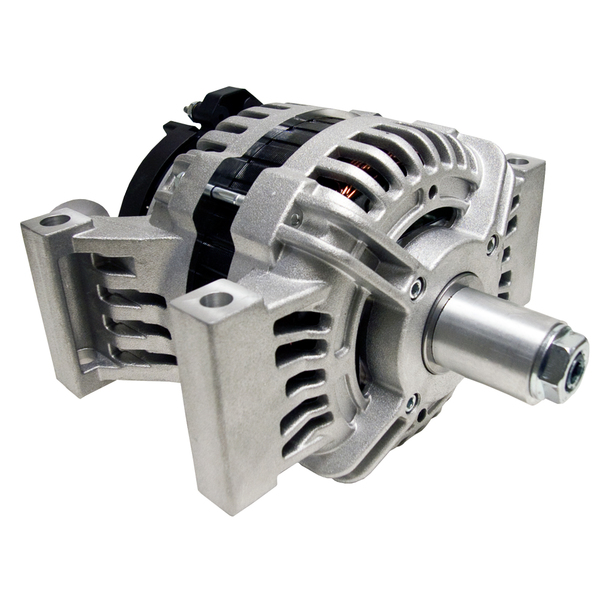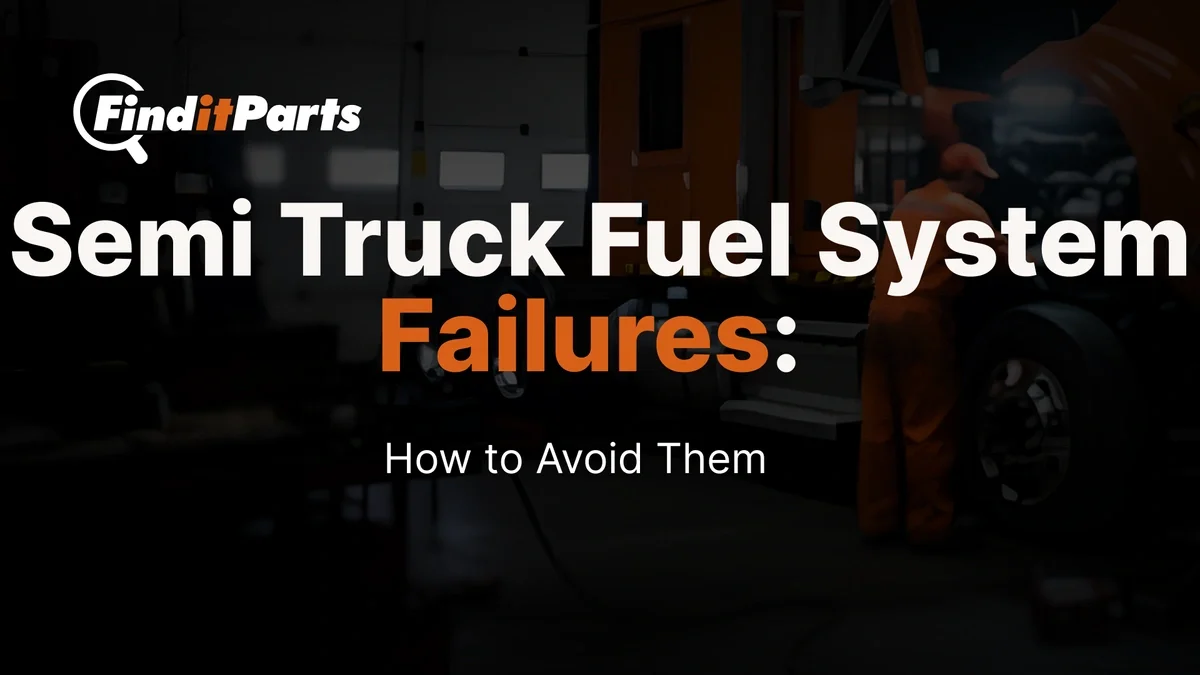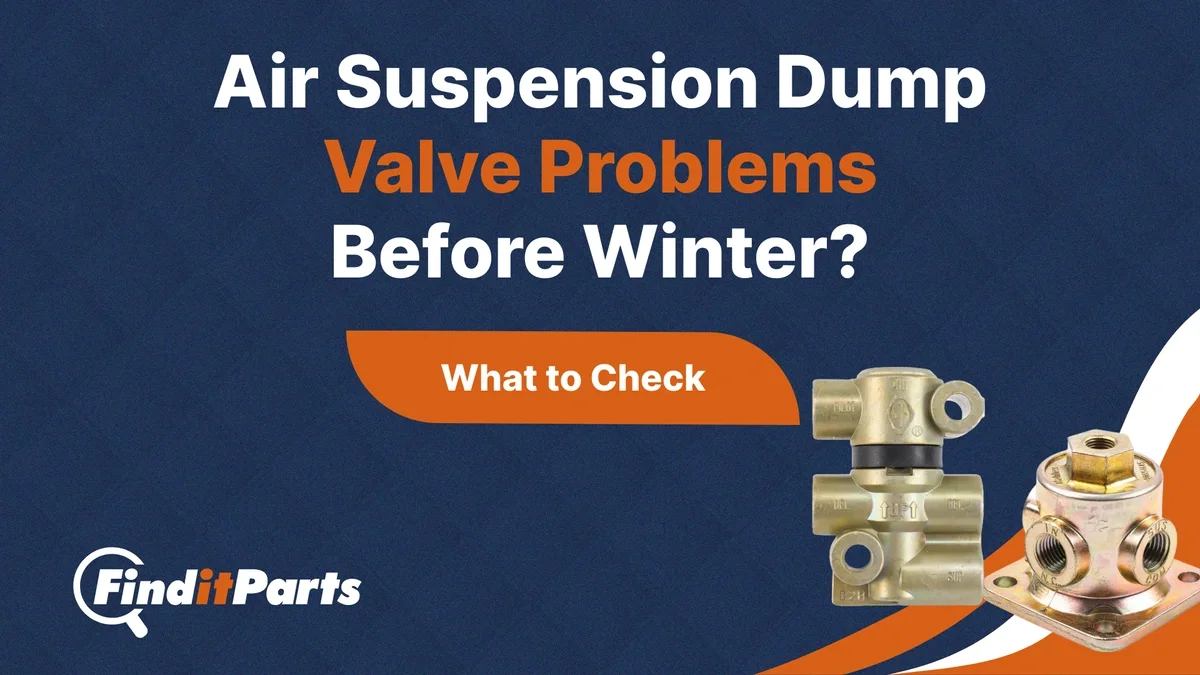Need help? We're here!
(888) 312-8812 Login SignupHow to Troubleshoot Your Truck’s Alternator
April 19, 2021

One of the worst things a truck operator can experience while on the road is a busted alternator. It can be something as simple as the dome lights flickering and resulting with you being stuck in the dark waiting for rescue in the middle of nowhere.
Thankfully, truck alternators are built to be tougher with reinforced materials and added protections against dust and overheating. However, tougher doesn't mean forever, as alternators do age and will eventually fail from too much wear. Other factors such as poor maintenance and harsh operating environments can also speed up wear or outright damage the unit itself and render it inoperable.
Alternator failure comes in many forms, and it's crucial for the operators to be aware of these to take necessary action and prevent further damage to the unit. Thankfully, symptoms of a bad truck alternator are similar to those in passenger cars, so the process can be pretty straightforward. In this guide, we'll share some basic tips on how to identify and troubleshoot alternator problems.
Common Warning Signs
Indicator light is on. Often the first sign that the alternator is in trouble is the battery or charge indicator lights up on the instrument panel. The light is typically triggered when the vehicle charging system's voltage output is below 12 volts, over the limit, or has stopped charging.
However, it should be noted that in some models, an indicator light that flashes intermittently means a drive belt or serpentine belt has come loose. Worn-out or bad alternator brushes may also cause the light to trigger. In some cases, the alternator may be perfectly fine and the light is switched on by a malfunctioning sensor or a broken circuit.
· Engine cranks slowly, doesn't crank or stalls. If the alternator is unable to charge the battery properly, there may not be enough power to start the engine, resulting in slow cranks or stalling. The engine may also stall if the alternator is unable to produce enough power to run the ignition system.
· Overheating battery. Overcharging the battery would cause it to heat up quickly. In such cases, you may find yourself adding water to the battery more often. If this problem is not addressed in time, the sudden fluctuations in temperature can damage the battery.
· Noises under the hood. Do you hear squealing, buzzing, or grinding noises from the engine? This may be due to malfunctioning alternator parts, a loose or worn-out belt, tensioner, alternating pulley, or mounting bolt. Worn bearings can also lead to odd noises.
· Lights. If the headlights, instrument cluster, dome lights, or other type of light in your truck start to dim or flicker, it may indicate that the battery has a low charge or there are faulty diodes inside the alternator. This is especially true if more than one light is malfunctioning at the same time. Sluggish power windows or a slurring sound from your radio or media player may also indicate alternator failure.
Troubleshooting Steps
If your truck is exhibiting one or more of the issues we have mentioned above, the alternator or its related components are likely the culprits. In such cases, we recommend performing the following procedures:
1. Conduct a visual inspection of the alternator for any signs of damage. Check the condition of the belt and whether it's still at the proper tension. Next, see if the electrical cables and plugs are in good conditions and connected correctly. Also, make sure that everything is mounted at their proper place and alignment.
2. Check and test the batteries. Be on the lookout for any sign of physical damage, such as cracks in the casing, corroded or loose battery terminals, or pools of battery fluid. Seriously damaged or corroded batteries should be replaced as soon as possible.
In addition, make sure that the batteries are of the same circuit, CCA rating type, and age. It's also strongly recommended that the batteries are made by the same manufacturer. Test the batteries using a standard battery tester. Take note in order to test correctly, the battery must be able to be fully charged in order to supply the current requirements of the starter.
1. With the engine running, use a voltmeter to measure the voltage rating of the battery. As a rule of thumb, if the voltage is greater than or equal to 13.8 volts, the battery is fine. However, if it's less than 13.8 volts, measure the voltage at the alternator case. Take note that you'll need to use a ground stud to get an accurate reading. At that point, if the voltage drops between 12.6 to 13.7 volts, the alternator will have to be replaced. On the other hand, if the voltage rating is greater than 13.8 volts, a voltage drop test needs to be done.
2. Conduct an alternator output test. We recommend using an automated tester for this step so you can make an accurate assessment. If the alternator fails this test, it will need to be replaced.
3. Check with the alternator's service manual. If you've passed through all the steps we've mentioned, the alternator is running as intended and is not likely to be the cause of the problem. However, we still strongly recommend cross-referencing with the manual to make sure you didn't miss out on anything.
If you have reason to believe there is a problem with your vehicle's alternator, be sure to have it inspected and serviced by a professional as soon as possible. A mechanic specializing in heavy duty alternators will have the skill and equipment to test the alternator's performance accurately, determine how much voltage it's giving off, and recommend repairs or replacement.
Diagnosing alternator problems and making the necessary fixes can lead to serious downtime for any truck, so it's crucial to invest in a high-quality alternator. A unit that complies with the industry's highest quality standards is less likely to malfunction, offering reliable performance for years to come. So, if you're on the market looking for a new alternator for your vehicle, make sure to decide on a replacement that fits your bottom line in the long run.
Finding the right alternators and other charging system parts is easy at FinditParts. With the industry’s largest single-source of commercial vehicle OEM and aftermarket parts, we have the ability access inventory from distributors and manufacturers nationwide, improving availability and speeding deliveries. Our focus on service and support as well includes advanced cross reference capabilities, and technical specialists who assist in identifying and finding parts.
Related Reading:
Cores and Remanufactured Parts
https://www.finditparts.com/blog/cores-and-remanufactured-parts
How to Choose the Right LED Lighting for Your Heavy Duty Truck
https://www.finditparts.com/blog/how-to-choose-the-right-led-lighting-for-your-heavy-duty-truck
Finding The Right Part Is As Easy As PIES
https://www.finditparts.com/blog/finding-the-right-part-is-as-easy-as-pies



